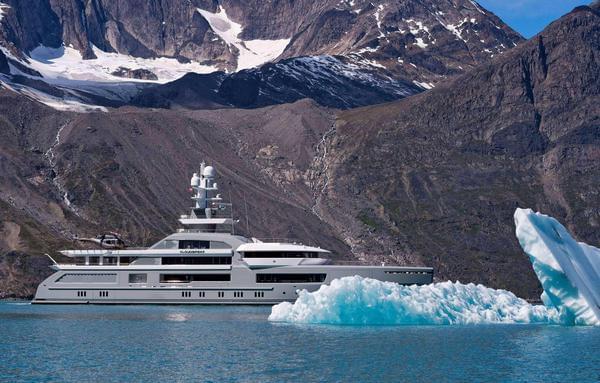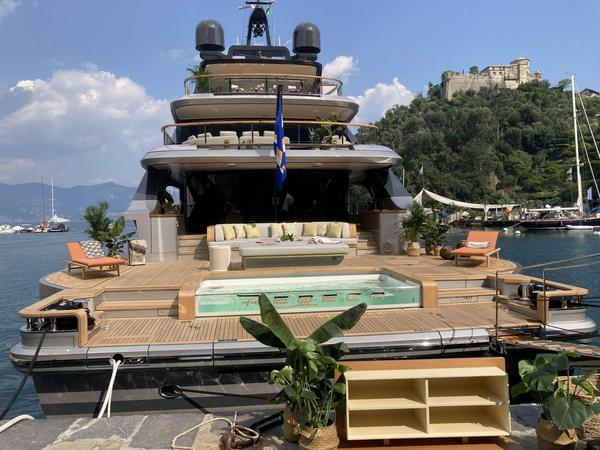
Romeo United Yachts brings together luxury yachts by a particular feature. Very often, a potential luxury yacht buyer is looking for a boat with an amenity he needs.
Here you can see the selection of yachts with a helipad, with deck elevator, boats with a shallow draught, yachts with country kitchen, extended range ocean goers, vessels with beach club at the stern, yachts with onboard cinema, his and her bathroom, onboard pool.
One of the most researched facilities for a modern boat shopper is a large beach club. A private sea terrace helps to avoid the crowds of beachgoers. Other things that prospective boat owners search for are a helipad, onboard pool and deck elevator.
If time is of the essence, please check the selection of yachts with shortened delivery times.
Don't wait to talk to a Romeo United Yachts professional for more information.
Imagine arriving at your luxurious yacht in style, whisked away by helicopter and greeted by a welcoming crew. At RomeoUnited.Yachts, we offer a curated selection of yachts for sale – all equipped with helipads – elevating your yachting experience to unparalleled levels.
Browse Our Listings or Contact Us Today:
RomeoUnited.Yachts boasts a diverse selection of yachts with helipads for sale. Search our listings online or contact us to discuss your dream yachting experience. Our expert team is here to guide you towards the perfect vessel, tailored to your specific needs and desires.





Luxury yachts with shallow draft
Romeo United Yachts explain why it is maybe crucial to have a shallow draft if you own or charter a superyacht.
Many world-renowned yacht builders are building boats that have a shallow draft.
Get in touch with a Romeo United Yachts specialist for expert advice.
Yachts with beach club:
As yacht design evolved over the years, a beach club became a favourite feature onboard a modern luxury yacht superyacht. Earlier designs saw just an openable transom door. The latest trend is to get not only an area at the stern where you can get in and get out of the water but much more amenities such as a hot/cold shower, sitting area and also an onboard pool. On a hot summer day, the beach club is probably the area where the owners and guests will spend most of their time while the yacht is at anchor. The onboard pool is great for the owners with children who can see their small ones enjoying the water in complete safety.
The most recent innovation of the beach club is foldable bulwarks (‘wings’) what allows to enlarge the beach club area to accommodate more people if necessary. Another recent novelty is a pool with a moving floor. It makes it possible to change the depth of the pool. You can make it shallow for small children and adjust it deeper when adults join the youngsters.
Nowadays, all the leading yards have exceptional offerings in their model line-up. You can find the most well-organised beach clubs onboard Benetti Oasis 40, Oasis 34, Mangusta Oceano 43, Mangusta Oceano 50.





Brand new yachts built on speculation:
We are proud to present the opportunities for brand new boats available for sale with handover in a reasonable time.
We explain the advantages and disadvantages of purchasing a yacht under construction.
Q: Why any buyer should consider a yacht started on speculation?
A: When the buyer chooses to enter the contract for a yacht that a builder starts building on his own, then three important factors come into play:
Q: OK, it all looks good, so what is the catch (compromise) here?
A: The possible downside of buying a boat started on speculation is that when you acquire a yacht that was decided by a builder you don’t have complete freedom to change the exterior and the machinery onboard.
If you engage in an early stage, usually, you can make changes to the interior.
Q: What builders build boats on speculation?
A: Financially sound yards, e.g. Amels/Damen, Benetti, Heesen, Sanlorenzo, Mangusta, Tankoa, Baglietto, all have excellent projects in portfolios. These shipyards can start building yachts that a buyer can get in a short time.
Treat yourself to a splendid selection of yachts hand-picked for you by Romeo United Yachts.





